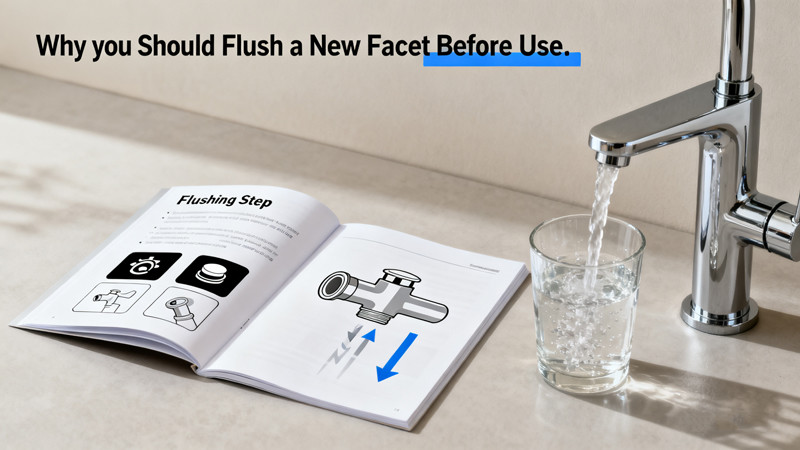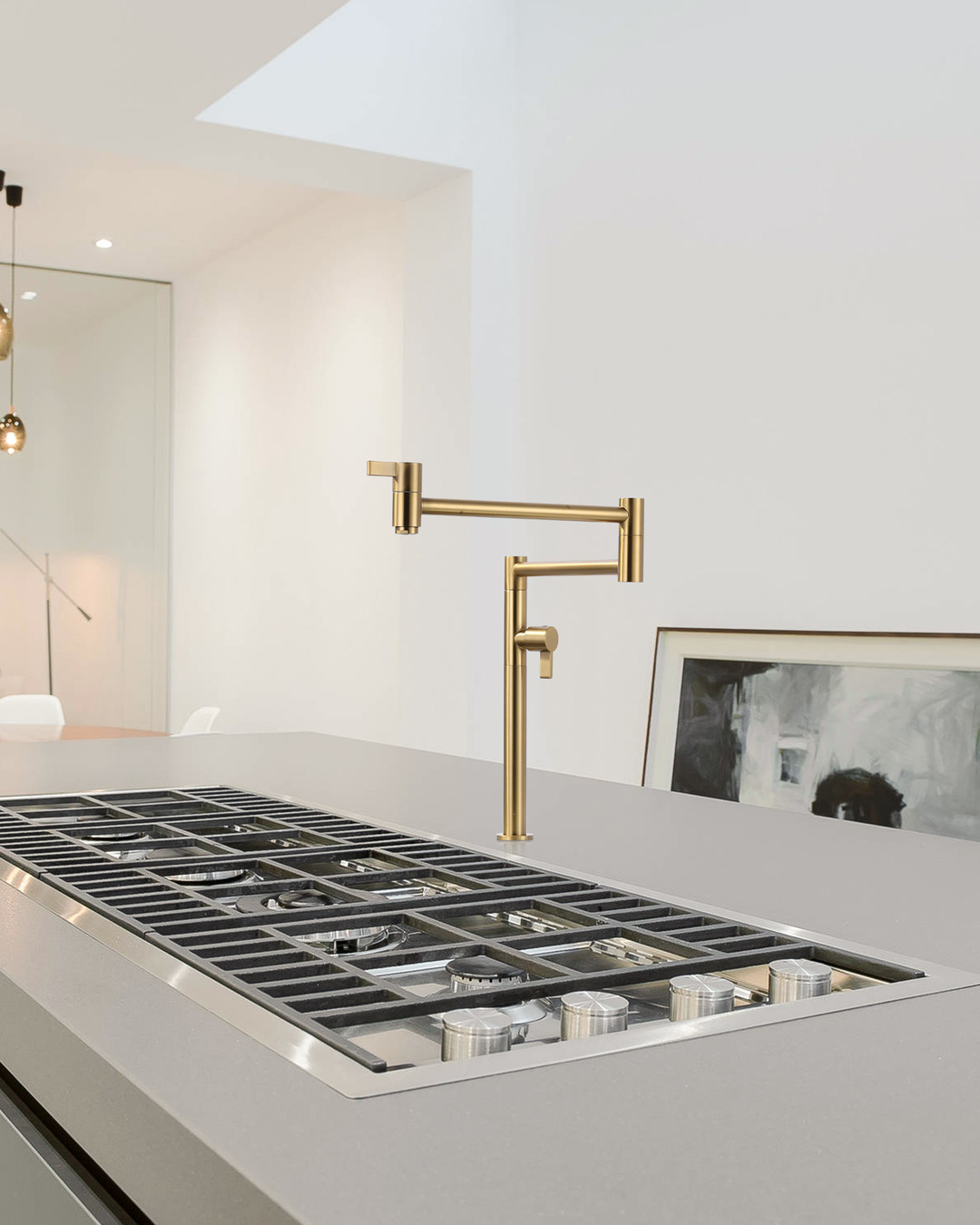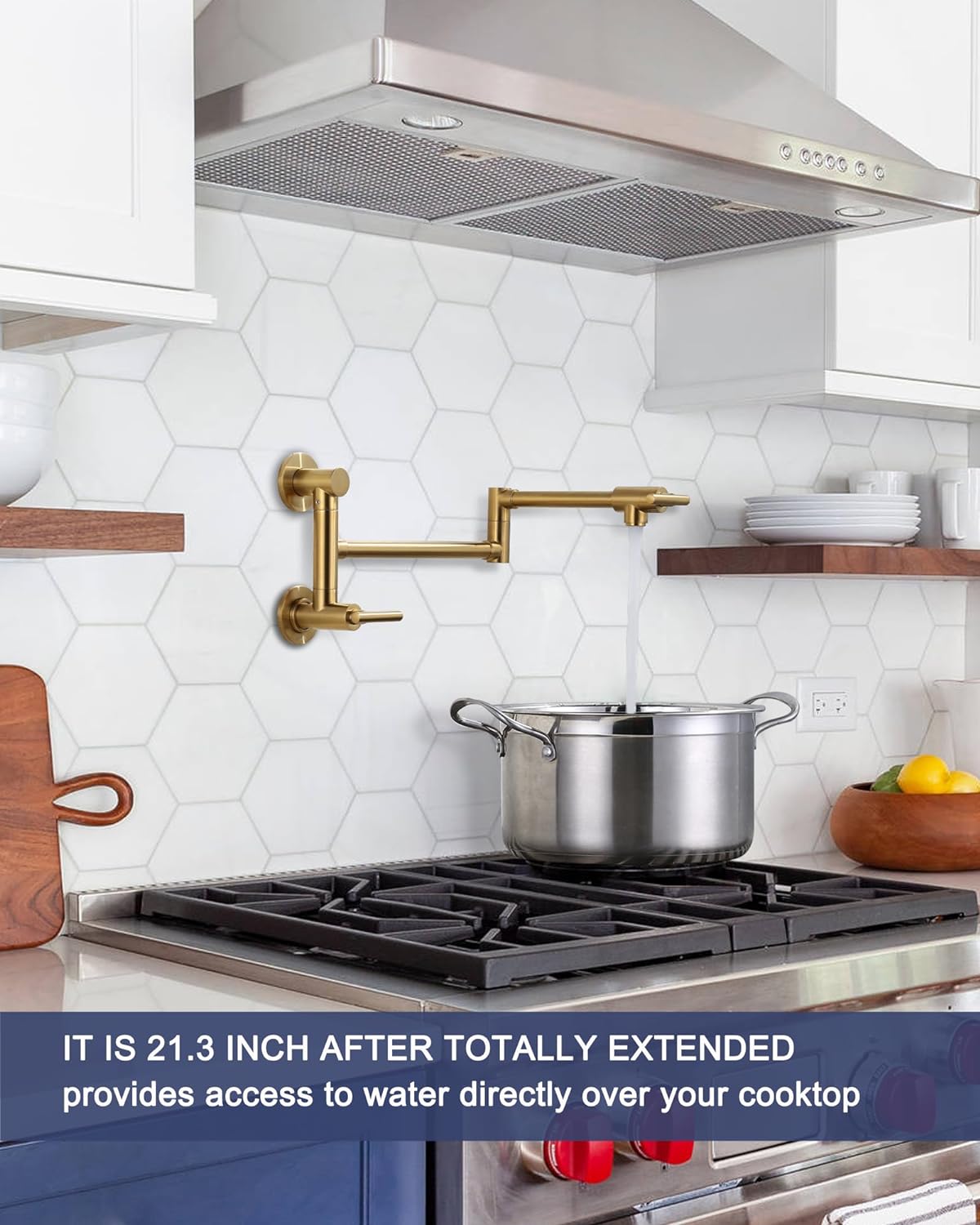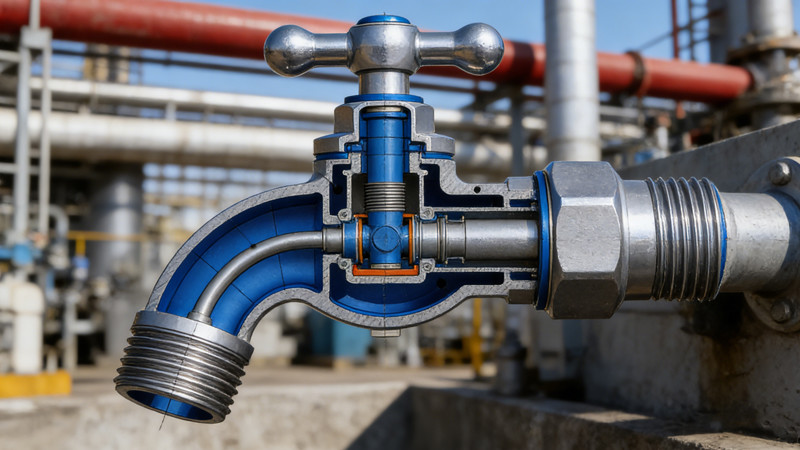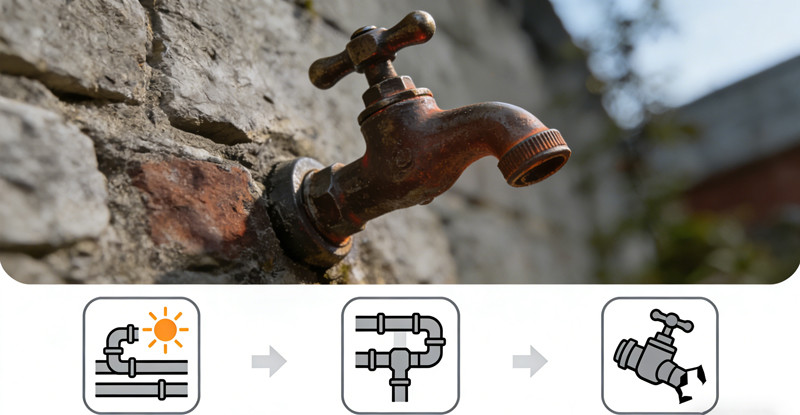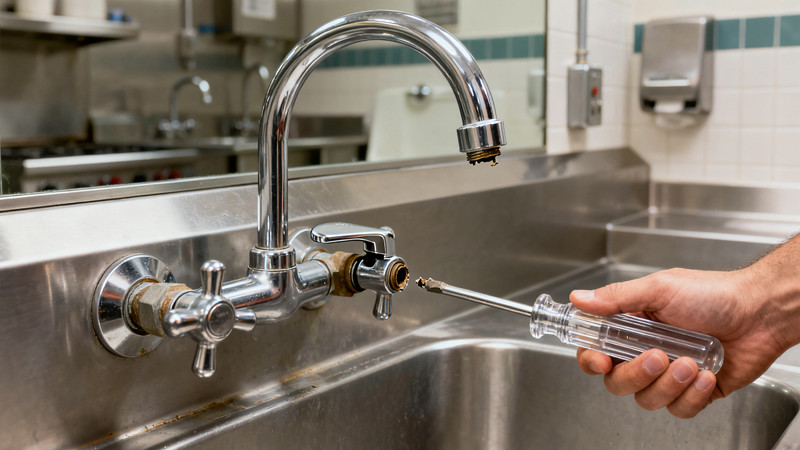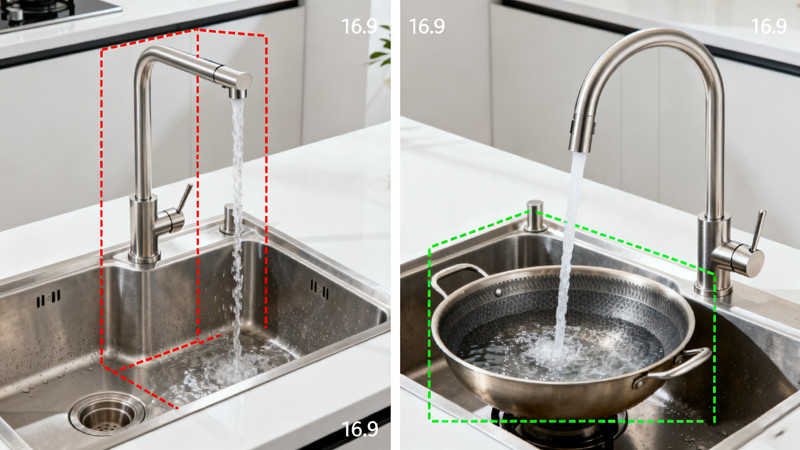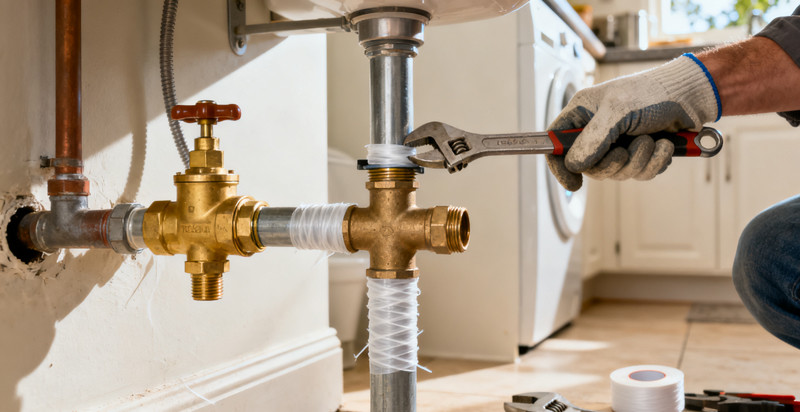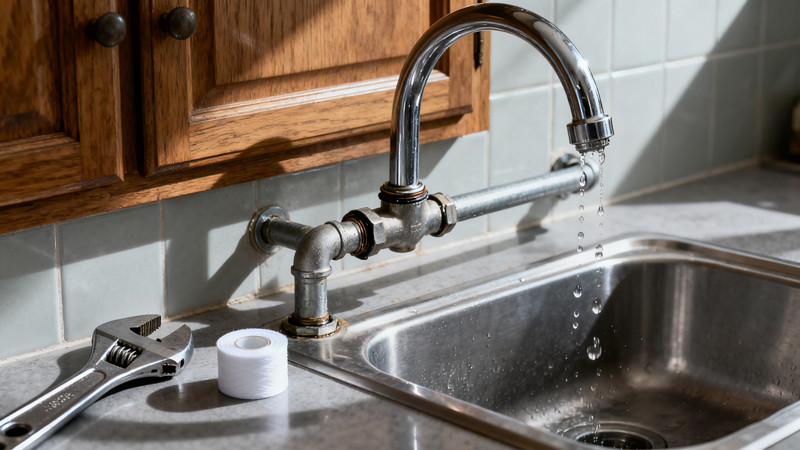When you install a brand-new faucet, it’s tempting to turn it on immediately and admire the smooth flow of water. After all, it’s shiny, modern, and brand new—so what could possibly go wrong?
However, before you start using your faucet for everyday tasks like cooking, washing, or drinking, there’s one crucial step you should never skip: flushing the faucet.
Many homeowners overlook this simple yet essential process, not realizing that skipping it can lead to cloudy water, clogs, leaks, or even long-term damage. Flushing your faucet after installation ensures that your plumbing system stays clean, efficient, and safe for daily use.
Let’s take a closer look at why flushing a new faucet is so important, what can happen if you don’t, and how to do it the right way.
1. What “Flushing” a Faucet Means
Flushing a faucet simply means running water through it for a few minutes before using it normally, to clear out any debris, sediment, or manufacturing residue inside the faucet and supply lines.
During manufacturing, shipping, and installation, various particles and contaminants can accumulate inside your plumbing system. These may include:
- Metal shavings from machining processes
- Dirt, dust, or packaging residue
- Silicone, rubber, or Teflon fragments from washers and seals
- Mineral buildup or pipe scale from existing plumbing
- Debris from soldering or cutting copper pipes during installation
When you flush the faucet, you’re essentially clearing out the system to ensure that only clean, safe water flows through your tap.
2. Why New Faucets Need Flushing
Even though new faucets look pristine, the inside is rarely spotless. Most faucet components—such as valves, aerators, and cartridges—are precision-engineered, meaning they can be sensitive to even the smallest particles. A single grain of debris can interfere with proper function.
Here are the main reasons flushing is so critical for new installations:
a. Removing Manufacturing Residue
Faucets are produced in factories where they are cut, drilled, and assembled. Small metal particles or lubricants used during production can remain trapped inside. Flushing ensures that any leftover residue is washed away before water ever touches your glass or food.
b. Clearing Plumbing Debris
If you recently replaced old pipes or installed new plumbing, bits of solder, copper flakes, or PVC shavings may have entered the lines. Without flushing, these can get lodged inside the faucet cartridge or aerator, causing uneven flow or total blockage.
c. Protecting the Faucet Cartridge
The cartridge is the heart of your faucet—it regulates water flow and temperature. Debris can scratch or jam this component, leading to drips, leaks, or difficulty turning the handle. Flushing removes those potential hazards before they cause damage.
d. Ensuring Clean, Safe Water
Before using your faucet for drinking or cooking, it’s important to confirm the water is free of contaminants. Flushing helps eliminate residues that could alter taste, appearance, or quality.
3. What Happens If You Don’t Flush Your Faucet
Many homeowners skip flushing, assuming it’s unnecessary. Unfortunately, that small oversight can lead to expensive repairs or water quality issues down the line.
Here’s what can happen if you don’t flush a new faucet:
a. Clogged Aerator
The aerator—the small screen at the tip of your faucet—can easily trap debris. When clogged, it causes low water pressure, uneven spray, or splashing. You might mistake this for a faulty faucet when it’s actually just debris buildup.
b. Damaged Cartridge or Valve
Even microscopic particles can scratch internal seals or valves, creating leaks or stiffness in the handle. Over time, these scratches wear down the internal components, shortening your faucet’s lifespan.
c. Cloudy or Discolored Water
Debris, dust, and metal particles can make your water appear cloudy or slightly brownish right after installation. Flushing clears the lines and restores clean, transparent flow.
d. Bacterial Growth Risk
If stagnant water or residue sits inside a new faucet for a long time before installation, it can harbor bacteria. Flushing ensures all stagnant water is replaced with fresh flow from your main supply.
e. Long-Term Maintenance Issues
Unflushed residue can build up inside the faucet body and connectors, leading to corrosion or scaling over time. This not only affects performance but also makes cleaning and maintenance more difficult later.
4. How to Properly Flush a New Faucet
Flushing is a simple process that takes only a few minutes but delivers lasting benefits. Follow these steps for best results:
Step 1: Remove the Aerator
Before you turn on the water, unscrew the aerator from the end of the spout. This prevents trapped debris from getting stuck in the screen.
Step 2: Open Both Handles
Turn on both the hot and cold handles to full flow. This helps flush both water lines simultaneously and clears out debris from the mixing chamber.
Step 3: Let the Water Run
Allow the water to run freely for about 2–5 minutes. If you notice cloudy or discolored water at first, continue running until it turns completely clear.
Step 4: Flush the Spray Hose (if applicable)
For pull-down or pull-out kitchen faucets, also flush the spray hose by running water through it for a few minutes. This ensures any trapped particles in the hose are cleared out.
Step 5: Reattach the Aerator
Once the water runs clear, reinstall the aerator and test the flow again. You should have smooth, even pressure and clear water.
Step 6: Check for Leaks
Inspect all connections under the sink to make sure there are no drips or leaks after flushing. Tighten fittings if necessary.
5. When to Repeat the Flushing Process
Flushing isn’t just for new faucets—it’s also recommended in a few other situations:
- After plumbing repairs or replacements – whenever pipes are cut or soldered, debris can enter the system.
- After periods of disuse – if your home has been vacant for weeks or months, stagnant water should be flushed before use.
- After water main repairs in your area – when the city repairs lines, sediment can enter your supply temporarily.
Regular flushing keeps your faucet performing smoothly and helps maintain high water quality in your home.
6. The Bottom Line
Flushing a new faucet might seem like an unnecessary extra step, but it’s one of the simplest ways to protect your investment and ensure safe, clean water. This quick process prevents clogs, extends the lifespan of your faucet, and gives you peace of mind knowing your plumbing system is clean and efficient.
In short, a few minutes of flushing today can save you hours of frustration and hundreds of dollars in potential repairs later. So the next time you install a faucet—whether in your kitchen, bathroom, or laundry room—take a moment to flush it properly. Your faucet (and your water quality) will thank you.
 WOWOW Faucets
WOWOW Faucets